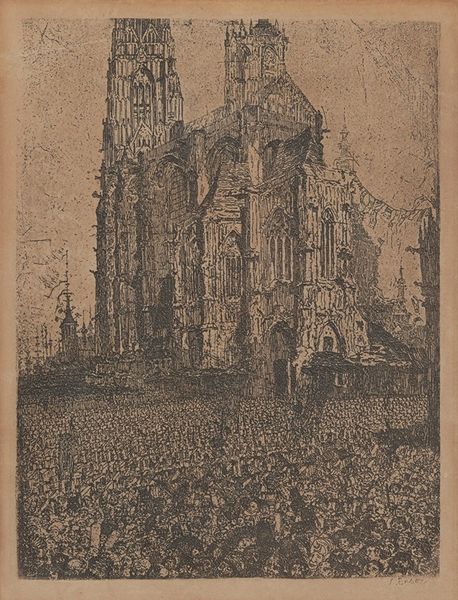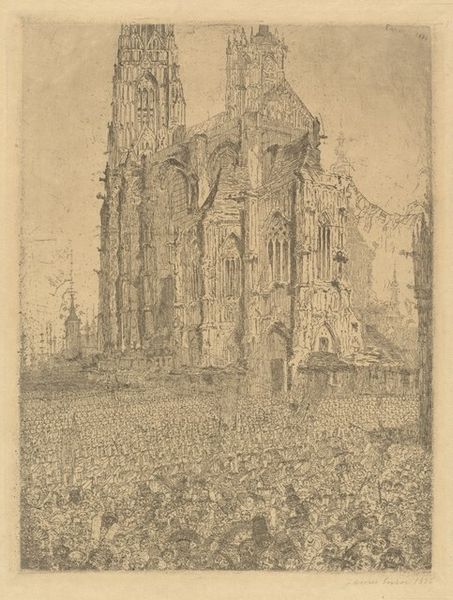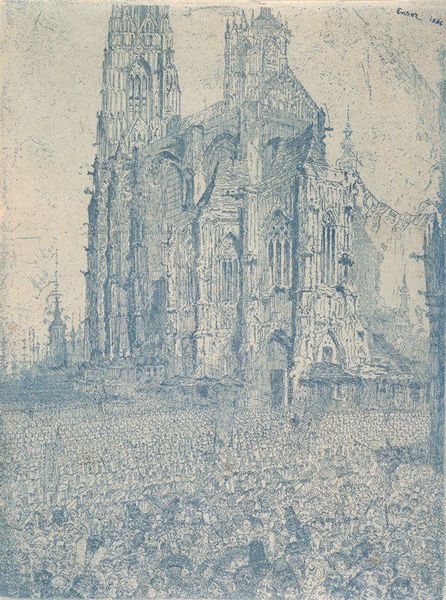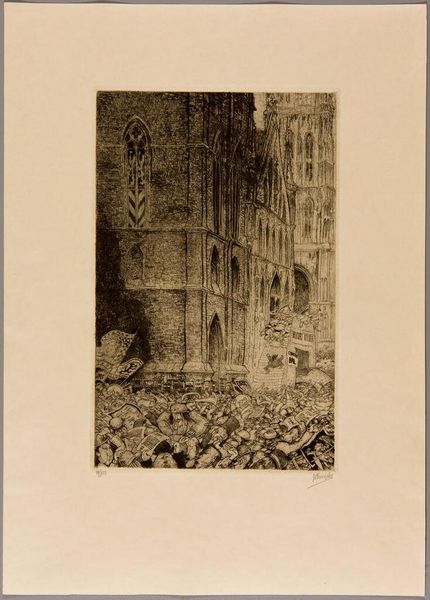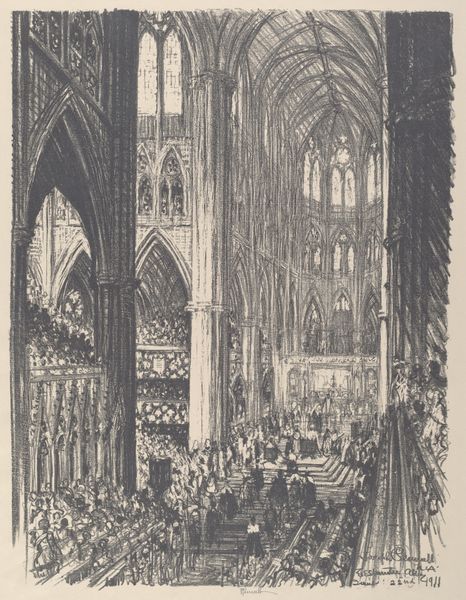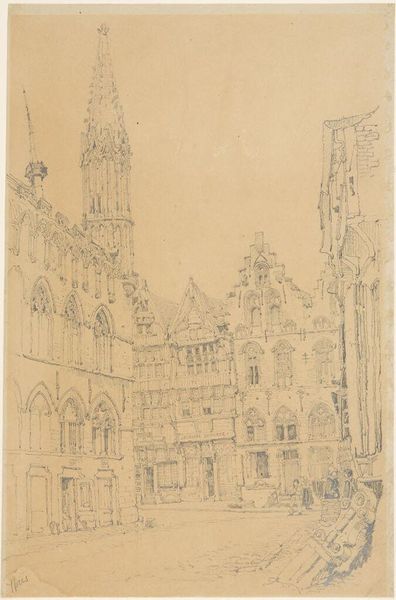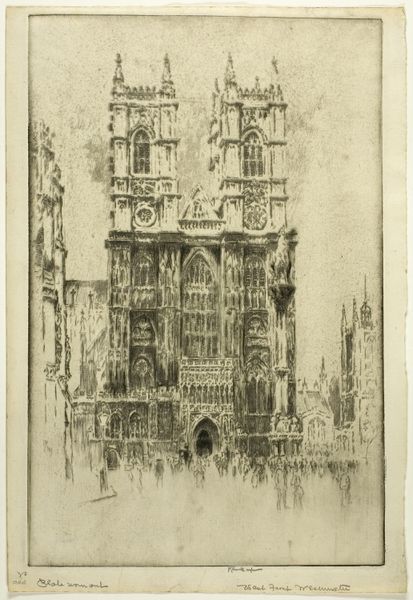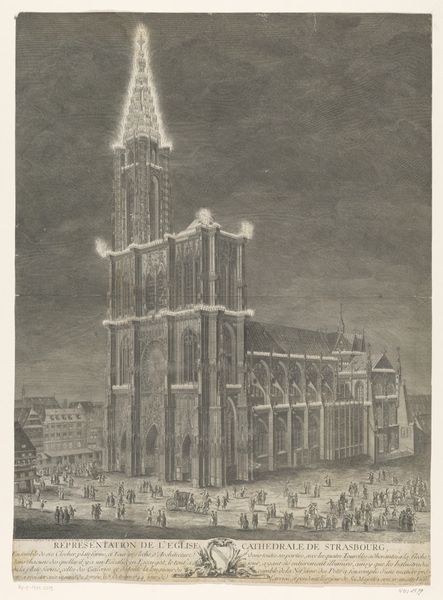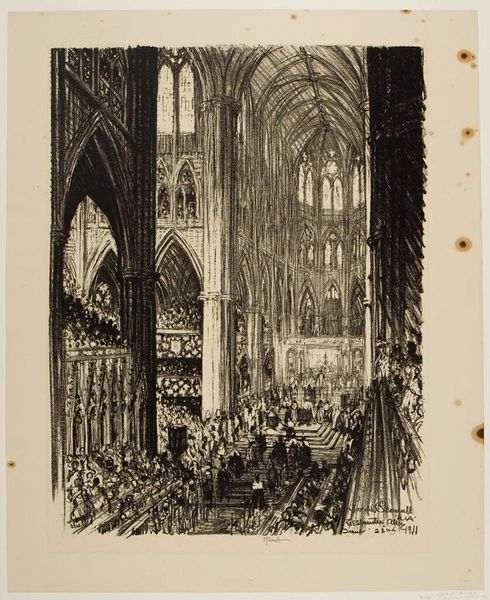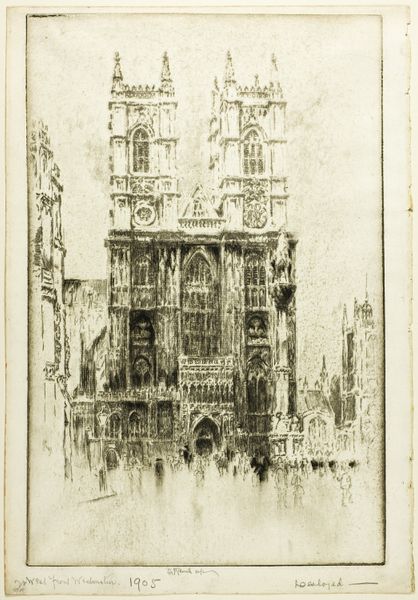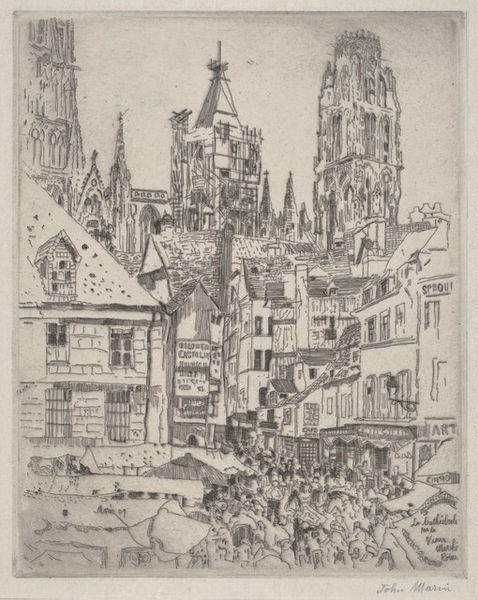
drawing, print, etching
#
drawing
# print
#
pen sketch
#
etching
#
landscape
#
figuration
#
line
#
symbolism
#
cityscape
#
pencil work
Copyright: Public Domain: Artvee
Curator: James Ensor’s etching, "The Cathedral," completed in 1896, offers a complex interplay of architectural grandeur and social commentary. What's your initial reading? Editor: Overwhelming! The sheer mass of the crowd confronting the cathedral makes me think about the role of institutions and the labor that sustains them. It looks almost like the cathedral is built on top of all these anonymous faces and bodies. Curator: Precisely. The print is striking because of Ensor's technical skill with etching. The delicate line work emphasizes the cathedral's imposing gothic architecture, while simultaneously depicting a restless, almost grotesque crowd amassed before it. It invites semiotic readings on power structures, perhaps? Editor: I see what you mean about power. The architectural materials are also key, the way Ensor uses lines to describe stone but also to give the impression of dust and decay. What kind of labor and materials were needed to even construct something of this scale in the first place? Curator: True. From a formal perspective, the exaggerated verticality emphasizes the spiritual aspirations of the cathedral, however, the dynamism injected into the piece by the agitated lines used to define the crowd complicates this sense of grandeur, doesn't it? There is some tension injected. Editor: Exactly. It pushes back against that grandeur. You're left wondering, who really benefits from this supposed "spiritual aspiration" and from what kind of societal cost? How is that spiritual message getting communicated to these nameless, massed bodies? Curator: Interesting. Looking closely, the crowd, rendered with swirling lines and a lack of individualized features, hints at the loss of personal identity within the mass—suggesting a potential critique of societal homogenization. Editor: And for me it brings into sharp relief the idea that spiritual and architectural projects like this are never separate from labor. I look at the line work suggesting brick and stone, and think, wow—someone had to haul every single one of those up there. Curator: A persuasive analysis focusing on material conditions. Overall, the success of Ensor's "The Cathedral" rests on his ability to mobilize this formal tension between line and form. Editor: Yes, I concur. Ensor makes visible through the etching process itself the monumental clash between labor and the structures it literally underpins.
Comments
No comments
Be the first to comment and join the conversation on the ultimate creative platform.
